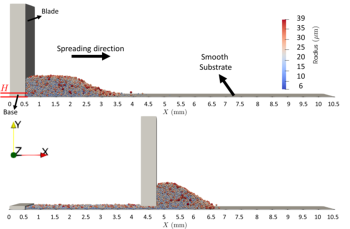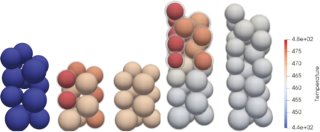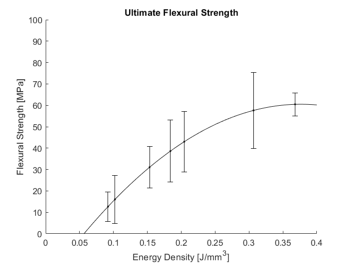Project aim
The aim of this project is to quantitatively predict agglomeration of fine-grained material through heating. This requires the development and calibration of new multi-scale particle models for fine powders and their subsequent application to processes in, among others, additive manufacturing. Selective laser sintering (SLS) is chosen as the prototype processe to which the new techniques are applied first. Especially challenging and novel aspects are the process dynamics, both the kinetics and rate-dependence, as well as the coupling between the macro and micro scales.
Project description
Selective Laser Sintering / Melting (SLS/SLM) is an additive manufacturing process consisting of various stages, each requiring different process parameters. Typically, the optimization of those parameters to achieve the desired final properties is done by performing costly experimental trials. We are developing a computational model that will help reduce the number of trials, thereby reducing the manufacturing costs. In addition, allowing processability predictions for new materials. This is achieved by comparing numerical results obtained through simulation of individual production steps against experimental data on the same processes, as illustrated by the figures below, as for example, powder spreading process (Fig. 1), particles melting (Fig. 2), and AM-product testing (Fig. 3), to advance the development of accurate predictive models.

Figure 1: Powder spreading process.

Figure 2: Simulation snapshots, from left to right: (1) add layer of particles, (2) partial melting during heating, (3) forming bonds during cooling, (4) add second layer of particles, heating it and (5) allow it to cool down.

Figure 3: Flexural strength of SLS parts
